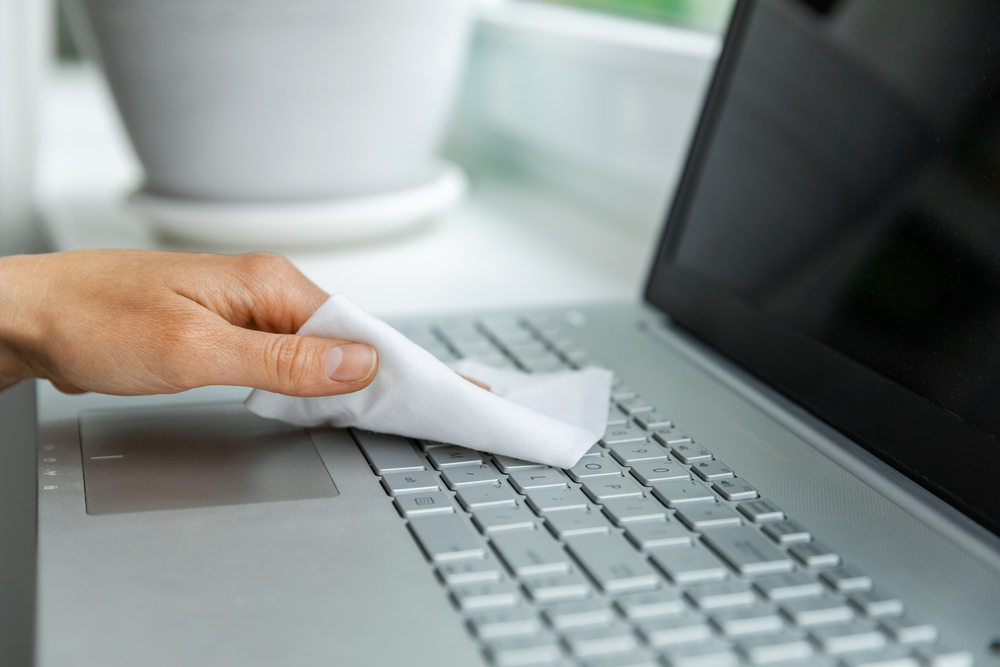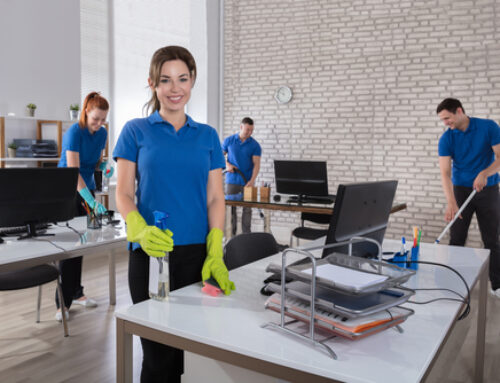Our electronic devices have become an indispensable part of our lives, helping us stay connected, entertained, and productive. With their increasing significance, it is crucial to maintain proper hygiene and cleanliness for these valuable gadgets. Regular deep cleaning not only ensures optimal performance but also promotes a healthy and safe environment for both the devices and their users. In this article, we will explore effective guidelines and techniques for safely cleaning and maintaining your electronic devices, helping you extend their lifespan and keep them in top-notch condition.
As we rely heavily on electronic devices, it’s essential to understand the importance of deep cleaning them.
Over time, dirt, dust, and even germs can accumulate on the surfaces, compromising their functionality and potentially posing health risks. By following the right cleaning practices, you can enhance the performance of your devices and maintain a hygienic environment.
Importance of Deep Cleaning Electronics
Deep cleaning your electronics serves multiple purposes. Firstly, it removes dust and dirt particles that can affect the performance of the device. Dust can accumulate inside the device, leading to overheating and reduced efficiency. Secondly, regular cleaning helps prevent the buildup of germs and bacteria, especially on high-touch surfaces such as keyboards and screens. Lastly, maintaining clean electronics contributes to their longevity and ensures that you get the most out of your investment.
Precautions Before Cleaning
Before you begin the cleaning process, it’s crucial to take some precautions to avoid any damage to your electronic devices. Here are a few important steps to follow:
- Power Off: Always turn off and unplug the device before cleaning. This prevents any electrical mishaps and protects you from potential harm.
- Refer to the Manual: Consult the manufacturer’s manual or website to understand any specific cleaning instructions or restrictions for your device.
- Remove Batteries: If applicable, remove the batteries from your devices before cleaning them. This step prevents any accidental liquid damage.
Cleaning Supplies and Tools
To effectively clean your electronics, gather the necessary supplies and tools beforehand. Here’s a list of commonly used items:
- Microfiber Cloths: These lint-free cloths are ideal for cleaning screens and delicate surfaces without scratching them.
- Compressed Air: Use compressed air cans with a straw attachment to blow away dust from hard-to-reach areas.
- Isopropyl Alcohol: Dilute isopropyl alcohol (at least 70%) can be used for cleaning surfaces and removing stubborn stains.
- Cotton Swabs: These are useful for detailed cleaning in small crevices or areas that are difficult to reach.
- Soft Bristle Brush: Use a soft brush to gently dislodge dust and debris from keyboards, vents, and other parts
Cleaning Process for Different Electronic Devices
Cleaning electronic devices requires specific techniques tailored to each device’s design and components. Let’s explore the step-by-step cleaning process for various types of electronics:
Mobile Phones and Tablets
- Start by powering off the device and removing any protective cases or screen protectors.
- Gently wipe the screen and body with a microfiber cloth to remove fingerprints and smudges.
- Use a cotton swab dipped in isopropyl alcohol to clean the charging port and audio jack.
- For stubborn grime or dirt in small crevices, use a soft brush or toothbrush.
- Allow the device to air dry completely before reattaching the protective case.
Laptops and Computers
- Shut down the device and unplug it from the power source.
- Use a compressed air can to blow away dust from the keyboard, vents, and ports.
- Wipe the screen and body with a microfiber cloth slightly dampened with a mixture of water and isopropyl alcohol.
- For keyboard cleaning, turn the device upside down and gently tap on the back to dislodge any debris. Then, use compressed air and a soft brush to clean between the keys.
- Allow the device to dry thoroughly before reconnecting the power source.
Keyboards and Mice
- Disconnect the keyboard or mouse from the computer.
- Shake the keyboard or mouse gently to remove loose debris.
- Use compressed air to blow away dust and particles between the keys or buttons.
- Dampen a microfiber cloth with a diluted solution of water and isopropyl alcohol. Wipe the surfaces of the keyboard or mouse.
- Let the devices air dry completely before reconnecting them.
Television Screens
- Turn off and unplug the television.
- Gently wipe the screen with a microfiber cloth to remove dust and fingerprints.
- For stubborn stains, lightly dampen the cloth with a mixture of water and vinegar or specialized screen-cleaning solution.
- Avoid applying excessive pressure while cleaning to prevent damage to the screen.
- Allow the screen to air dry before plugging in and turning on the television.
Gaming Consoles
- Power off and unplug the gaming console.
- Use a microfiber cloth to wipe the exterior of the console and controllers.
- For small crevices and buttons, use cotton swabs dipped in isopropyl alcohol to remove dirt and grime.
- Use compressed air to blow away dust from the vents and ports.
- Ensure the console is completely dry before reconnecting and powering it back on.
Cleaning Tips for Internal Components
While external cleaning is essential, it’s also crucial to keep the internal components of your electronic devices clean. Here are some tips:
- Regular Maintenance: Follow the manufacturer’s guidelines for cleaning internal components, such as fans and heat sinks, to prevent overheating and ensure optimal performance.
- Avoid Liquid Cleaners: Never use liquid cleaners directly on internal components. Instead, use compressed air to remove dust and debris.
- Professional Assistance: If you’re unsure about cleaning internal components, seek professional assistance to avoid accidental damage.
Proper Cable Management
Effective cable management not only keeps your workspace organized but also improves airflow and prevents cable-related accidents. Here’s how to manage your cables properly:
- Labeling: Use cable tags or labels to identify each cable, making it easier to trace and manage.
- Bundling: Group cables together using cable ties or Velcro straps to minimize tangle your articles. This not only makes your content visually appealing but also prevents tangling and tripping hazards.
- Routing: Route cables along the back of desks or walls using cable clips or adhesive hooks to keep them neat and out of the way.
- Wireless Options: Whenever possible, opt for wireless connections to reduce cable clutter and simplify maintenance.
Regular Maintenance Routine
To ensure the longevity and optimal performance of your electronic devices, establish a regular maintenance routine. Here are some key practices to incorporate:
- Scheduled Cleaning: Set aside specific times to deep clean your electronics, considering factors such as usage frequency and environmental conditions.
- Check for Updates: Regularly check for software updates and firmware upgrades for your devices, as these often include bug fixes and performance improvements.
- Backup Data: Create a backup of important files and data periodically to protect against data loss in case of device malfunction or damage.
- Monitor Device Temperature: Keep an eye on the temperature of your devices, especially during intensive tasks, and take measures to prevent overheating if necessary.
- Replace Consumables: Replace consumable items such as printer ink cartridges or air filters in a timely manner to maintain device performance.
Protecting Electronics from Dust and Dirt
Preventing dust and dirt from settling on your electronic devices can significantly reduce the frequency of deep cleaning. Here are some preventive measures:
- Dust Covers: When not in use, cover your devices with appropriate dust covers or cases to minimize dust accumulation.
- Air Purifiers: Consider using air purifiers or air filters in the room where your electronics are located to reduce airborne particles.
- Keep Windows and Doors Closed: Avoid opening windows or doors near your devices to prevent dust from entering the room.
- Regular Dusting: Dust the surrounding areas regularly to minimize dust particles settling on your devices.
Cleaning and Sanitizing High-Touch Surfaces
In today’s hygiene-conscious world, it’s essential to clean and sanitize high-touch surfaces of electronic devices regularly. Follow these steps:
- Power Off and Unplug: Turn off and unplug the device before cleaning to avoid any electrical hazards.
- Use Disinfecting Wipes: Use disinfecting wipes or a cloth dampened with an appropriate disinfectant to gently clean high-touch surfaces such as screens, buttons, and touchpads.
- Avoid Excess Moisture: Ensure the cloth or wipe is not overly damp to prevent liquid damage to the device.
- Allow Drying Time: Let the device air dry completely before turning it back on or reconnecting the power source.
Safe Disinfecting Practices
While disinfecting electronic devices, it’s crucial to follow safe practices to protect both the device and the user. Consider the following guidelines:
- Check Manufacturer’s Recommendations: Refer to the device’s manual or the manufacturer’s website for any specific guidelines on disinfection.
- Avoid Harsh Chemicals: Use disinfectants recommended for electronic devices and avoid harsh chemicals that may damage the surfaces or coatings.
- Test in a Small Area: Before applying a disinfectant, test it on a small, inconspicuous area to ensure it doesn’t cause any discoloration or damage.
- Wash Hands: Remember to wash your hands thoroughly after handling disinfectants to maintain personal hygiene.
Cleaning Audio Equipment
Audio equipment, such as headphones and speakers, require special attention to maintain sound quality. Follow these cleaning tips:
Remove Earpads: If your headphones have removable earpads, gently detach them and clean them separately according to the manufacturer’s instructions.
Wipe with Microfiber Cloth: Use a microfiber cloth to wipe the surfaces of the headphones or speakers, paying attention to remove any visible dirt or smudges.
- Cleaning Grilles: For speakers with grilles, use a soft brush or a vacuum cleaner with a brush attachment to remove dust and debris.
- Disinfecting Earbuds: If your earbuds have removable silicone tips, clean them with a damp cloth or disinfecting wipe. Avoid submerging the earbuds in water.
- Drying Time: Allow the audio equipment to dry completely before using or storing them to prevent any damage.
Extending Battery Life
Proper care and maintenance of electronic device batteries can help extend their lifespan. Consider these tips to optimize battery performance:
- Avoid Overcharging: Disconnect the device from the charger once it reaches full battery capacity to prevent overcharging, which can degrade the battery over time.
- Optimize Power Settings: Adjust the device’s power settings to optimize battery life. Lower screen brightness, reduce background app activity, and disable unnecessary features when not in use.
- Use Battery Saving Modes: Take advantage of built-in battery-saving modes or apps that help conserve power during periods of extended use.
- Regularly Calibrate: Calibrate the device’s battery by fully charging it, then discharging it until it reaches a low percentage before recharging. This helps maintain accurate battery level readings.
Storing Electronics Properly
When not in use, proper storage of electronic devices is essential to protect them from damage and ensure longevity. Follow these guidelines:
- Clean and Dry: Before storing, ensure the device is clean and dry to prevent the accumulation of dirt or moisture.
- Temperature and Humidity: Store electronic devices in a cool, dry environment, away from direct sunlight, extreme temperatures, and high humidity.
- Protective Cases: Use appropriate protective cases or covers to shield devices from dust, scratches, and accidental impacts.
- Avoid Tight Spaces: Avoid storing devices in tight spaces or crowded areas where they may experience pressure or accidental damage.
In Conclusion…
Regular deep cleaning and maintenance of your electronic devices are essential for optimal performance, hygiene, and longevity. By following the guidelines and techniques provided in this article, you can ensure that your devices remain clean, efficient, and safe to use. Remember to take necessary precautions, use suitable cleaning supplies, and refer to manufacturer instructions when in doubt. With proper care, your electronic devices will continue to serve you well, providing you with a seamless and enjoyable user experience.





